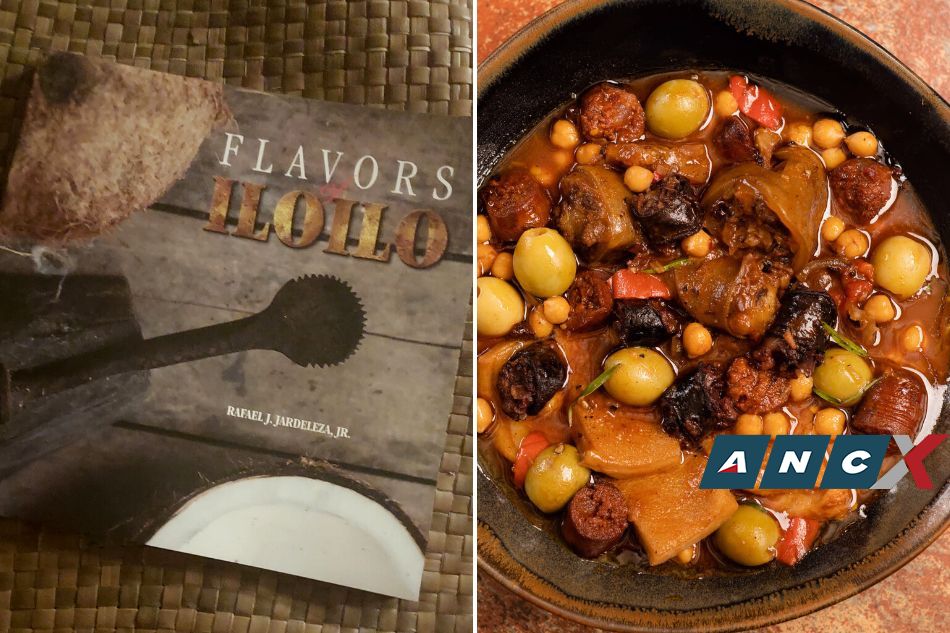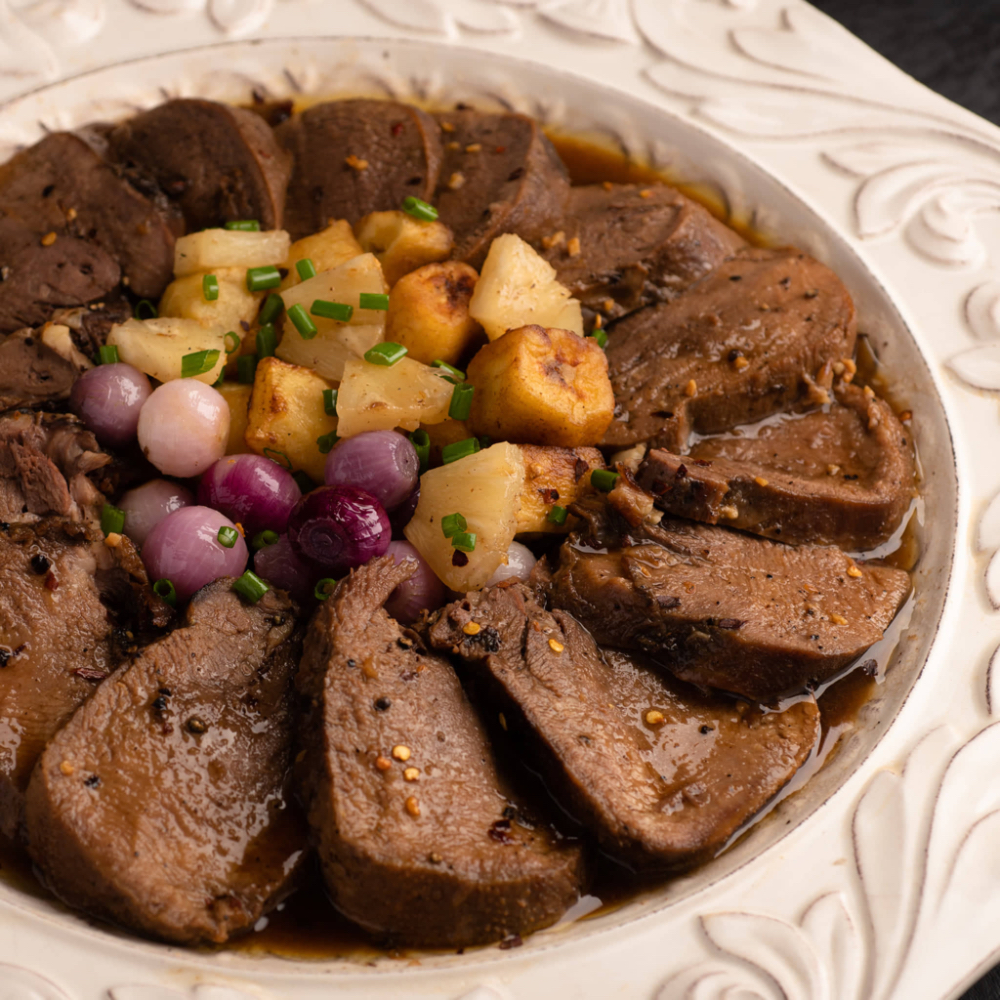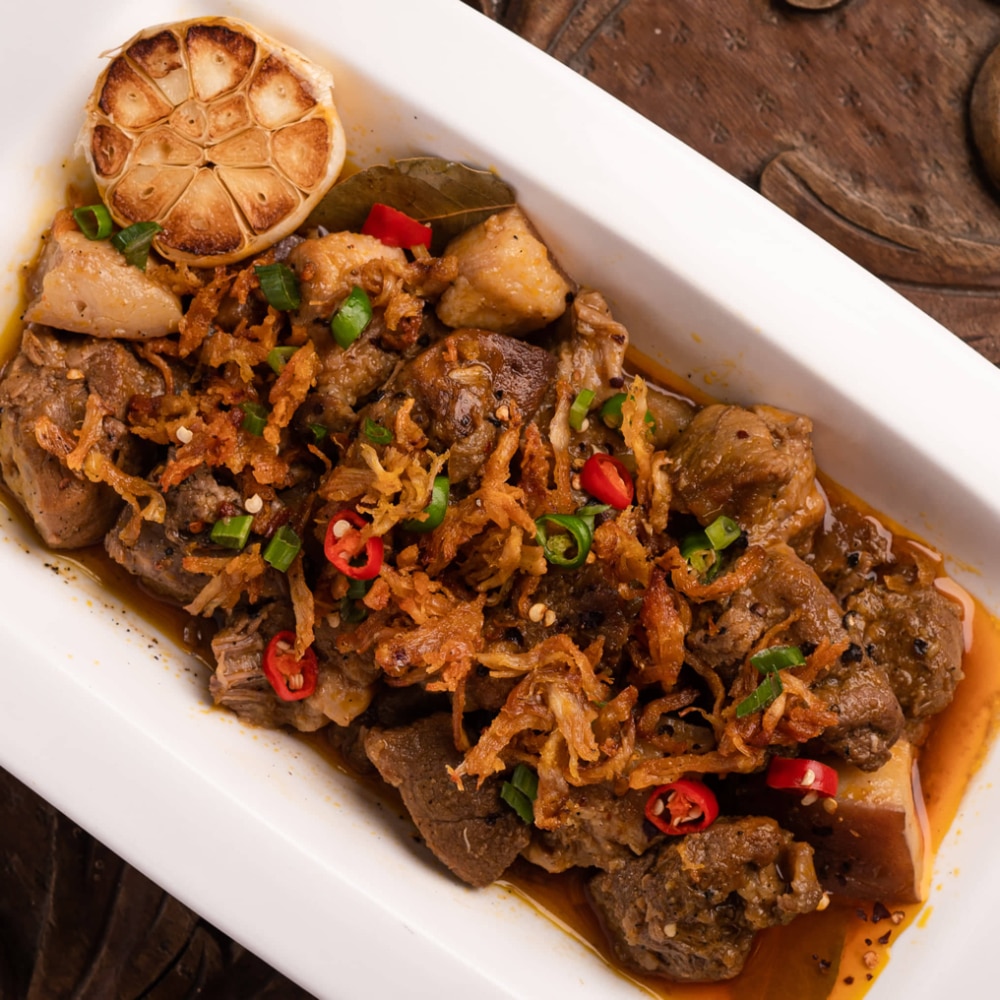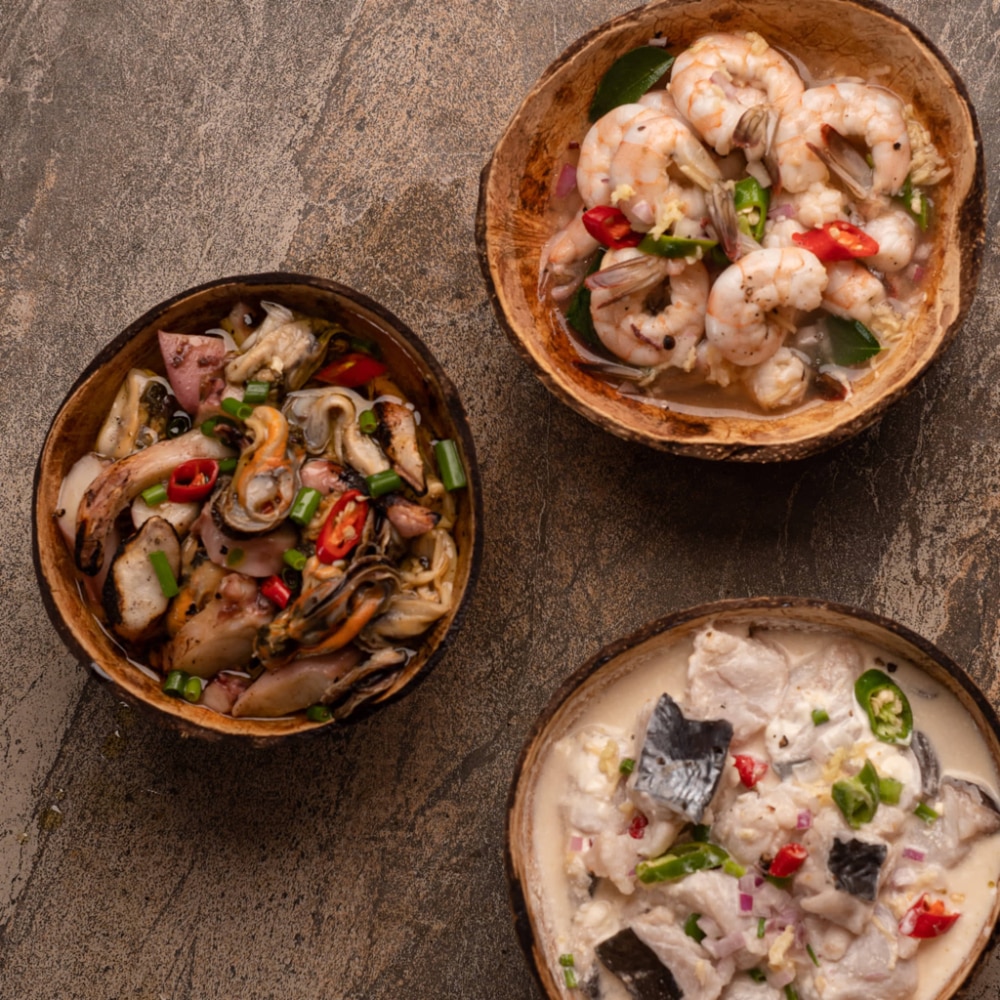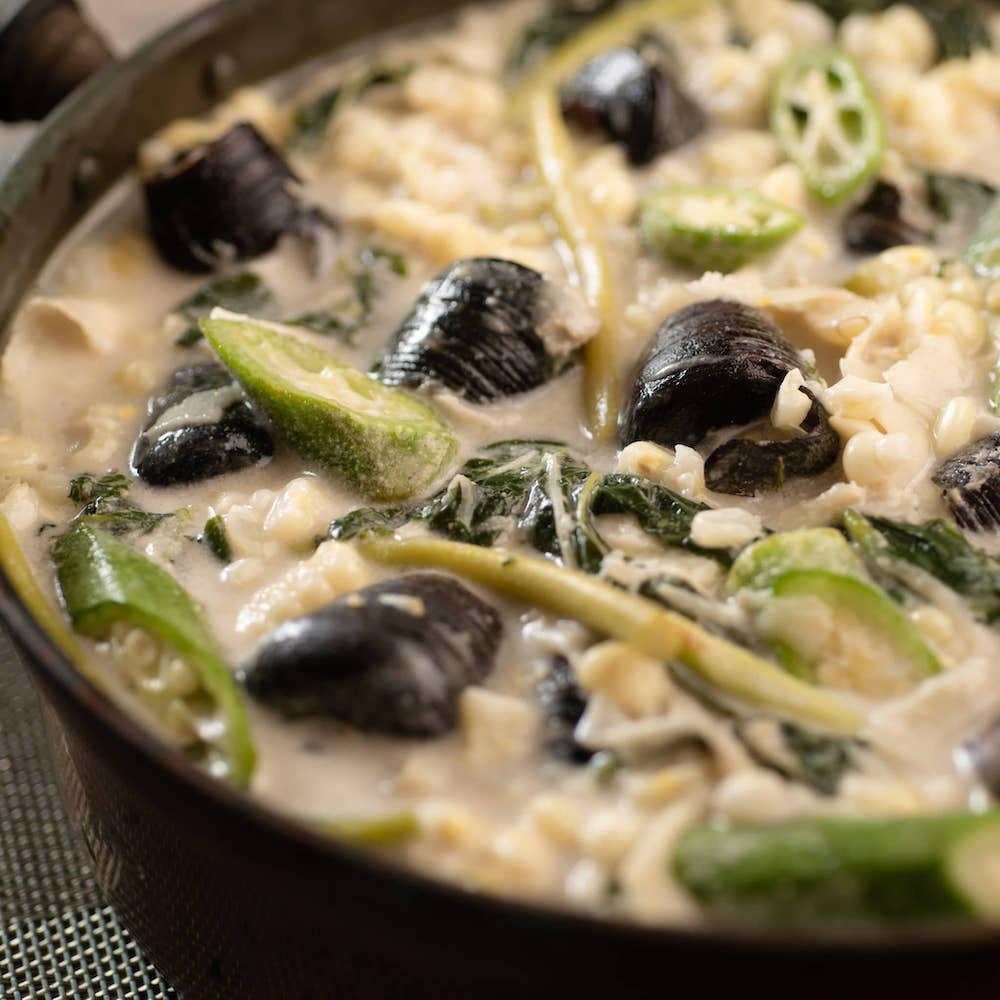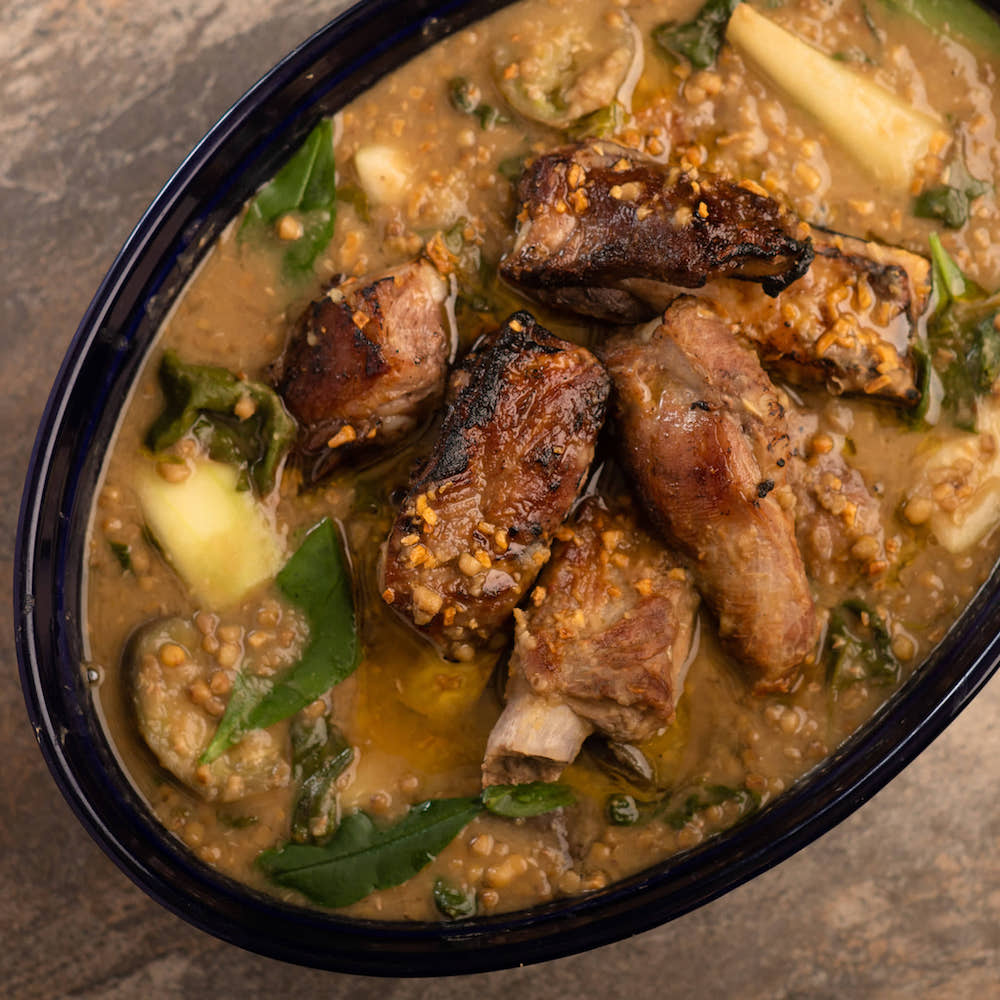A cookbook especially dedicated to Ilonggo cuisine is a long time coming for Iloilo City which is known for its rich food culture. It’s also been a long but fulfilling journey for its author Chef Rafael “Tibong” Jardeleza, Jr. who for the past two decades has been zealously promoting Ilonggo food thru his restaurants Afrique's, Mundo Ristorante, and Rafael's Cocina del Sur. He is also the mover behind Sabores de Visayas, an annual gala dinner event featuring Filipino heritage cuisine chefs and Ilonggo cooks, and the annual Tabuan Cooking Competition, Flavors of Western Visayas Convention and Ilonggo Street Food Festival.
The cookbook is a culmination of Chef Tibong’s years of deep-diving into the world of Ilonggo gastronomy. Thanks to the Iloilo City Government, the Iloilo Festivals Foundation, Inc., and the First Lady of Iloilo City, Rosalie Sarabia Treñas, there’s now a book that proudly showcases the flavors of Iloilo. Mayor Jerry Treñas says they hope to strengthen their identity as Ilonggos by preserving their culinary skills and traditions and promote Iloilo—the city and the province—as a premiere culinary destination in Western Visayas and in the Philippines.
The over 200-pager—edited by veteran food editor Michaela Fenix and designed by award-winning book designer Ige Ramos—features beef, pork, poultry, seafood and vegetable dishes and desserts cooked the Ilonggo way, and with ingredients mainly sourced from the city and the province of Iloilo. We caught up with Chef Tibong recently and he sat down with to talk about the book, growing up in the Ilonggo kitchen, and what sets Iloilo cuisine apart.
What inspired you to put together ‘Flavors of Iloilo’?
I’ve actually been planning to do a cookbook project about our grandmother, Francisca. My cousin, Former Associate Justice of the Supreme Court Francis Jardeleza, wanted to publish it. I was already starting to collect recipes for it when I got a call from [the First Lady of Iloilo City] Rosalie [Treñas] and told me that she wanted to make a cookbook. So sabi ko let’s collaborate.
This book is for the Ilonggos. It showcases the culture, tradition and the history of Iloilo. Because I believe that one way to fully understand the culture of a place is thru its food. When Ilonggos give this book as a gift to their friends, it’s like telling them: “This is my culture, this is where I come from.” The real purpose of this book is really telling others about who we are.
What defines Ilonggo cuisine and what makes it special?
Ilonggo cuisine is simple, traditional, and prepared with love. It’s slow food. I’m not only referring to the cooking process. What I mean is, all the ingredients come within the vicinity, within five kilometers or within the region. We’ve been practicing the slow food concept for centuries as a region. We utilize and preserve the diversity of our endemic ingredients. We have batwan, kadios, alumpira etc.—we use them all in our cooking. We have the Huwevesans [where we get to buy fresh produce every Thursday] and our public markets are teeming with a variety of ingredients.
The best thing about Ilonggo cuisine is that it has been here for a long time and it’s never forgotten. What’s amusing is that some Ilonggos weren’t fond of eating laswa when they were kids because it’s slimy and all. Then when they leave Iloilo to work or live elsewhere, they would find themselves craving the dish when they go back to Iloilo for vacation. They miss something they didn’t even eat when they were young. Why? Because it’s part of their culture.
Are there ingredients you wish to bring back to the consciousness of Ilonggos?
Ever since, I’ve been promoting ingredients that are available here for centuries. They are being used up to now. Wala kaming sinayang. That is why I appreciate our farmers and our fisherfolks. The supply of ingredients remained the same mula nang magkamalay ako.
What recipes can readers expect in ‘Flavors of Iloilo’?
These are the dishes that are served in Ilonggo homes in ordinary days, in fiestas and celebrations. Almost all the ingredients and dishes in the book are part of our everyday life. But I limited the dishes only to those that are popular in Iloilo.
Thru this book, people can see the influences of different cultures in Ilonggo cuisine. It has the influence of the Chinese—we see that in the pancit molo, batchoy, and lugaw. For Spanish, there’s callos and paella. It’s possible that we got the kinilaw from the Japanese. The Malays and Borneans also came here, so we have dishes that are spicy and magata, which explains the kudkuran and niyog on the cover of the book. Some people think spicy food is only in Bicol, we also have spicy food. In fact, we have here in Iloilo one of the spiciest peppers, the kutitot, which is also featured in the book.
What are recipes in the book that are close to your heart?
My lola Iska’s Lengua Estofado. It’s the best lengua I’ve ever tasted. It’s slow-cooked for three days. I’m the only one na nakakuha ng recipe na ito sa lola ko not because ipinasa niya sa akin, but because I was there beside her when she was making it. I saw her cook it so many times nung maliit ako. The Paella Negra also.
So it was your lola who inspired you to pursue cooking?
[Love of cooking] runs in the blood. My grandma Francisca was a very good cook. She had many children, nine I think, so she had to cook for a lot of people. The family ran a meat business, we have fish ponds and everything. We're not super rich but we are rich in food. My dad and mom are very good cooks. And I cook very well. But it didn't cross my mind that I’d be a kusinero.
I remember spending weekends at my lola’s place. Natutulog ako sa banig kasi sa ibaba ng kama niya merong [stock ng] Panaderia de Molo biscuits. I would have it with Royal Tru Orange. These memories, and assisting her in the kitchen, possibly influenced me to pursue cooking.
Did you study culinary arts?
No, I studied interior design. I consider myself a self-taught cook. I got the chance to visit a culinary school abroad but I didn’t find it amusing that they’d teach me how to chop onions. Back then, I already had hundreds of recipes in my head. I thought, I have to cook Filipino dishes first before I do other dishes.
That’s why whenever I do lectures and seminars here, I always tell the students and participants, “You can only be a very good chef or cook if you know where you came from. Try to first learn your regional dishes and then showcase it to the world, rather than showcase to the world something that isn't even yours.”
What is a common misconception about Ilonggo cuisine?
That it’s only about batchoy, molo, and KBL. As you can see in the book, we have so many wonderful dishes here in Iloilo.
To order the “Flavors of Iloilo” Cookbook, contact Jennie Tamon of Iloilo Festivals Foundation Inc. (IFFI) at 0910-5527304.
Photos from 'Flavors of Iloilo' published with permission from Chef Rafael “Tibong” Jardeleza, Jr.


